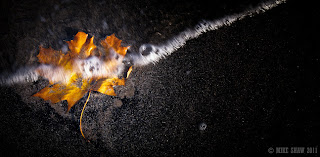Monday, 10 September 2012
Sleep
apnea is a serious sleep disorder that occurs when a person's breathing
is interrupted during sleep. People with untreated sleep apnea stop
breathing repeatedly during their sleep, sometimes hundreds of times.
This means the brain -- and the rest of the body -- may not get enough
oxygen.
There are two types of sleep apnea:
Obstructive sleep apnea (OSA): The more common of the two forms of
apnea, it is caused by a blockage of the airway, usually when the soft
tissue in the back of the throat collapses during sleep.
Central
sleep apnea: Unlike OSA, the airway is not blocked, but the brain fails
to signal the muscles to breathe due to instability in the respiratory
control center.
Obsessive-Compulsive Disorder (OCD)
Symptoms and Treatment of Compulsive Behavior and Obsessive Thoughts
for furthur reading chek this link
http://www.helpguide.org/mental/obsessive_compulsive_disorder_ocd.htmhttp://www.helpguide.org/mental/obsessive_compulsive_disorder_ocd.htm
Post title
c(OCD):
It is an anxiety disorder characterized by uncontrollable, unwanted
thoughts and repetitive, ritualized behaviors you feel compelled to
perform.
For example, you may check the stove twenty times to make
sure it’s really turned off, wash your hands until they’re scrubbed raw,
or drive around for hours to make sure that the bump you heard while
driving wasn’t a person you ran over.
OCD signs and symptoms: Obsessive thoughts
Common obsessive thoughts in obsessive-compulsive disorder (OCD) include:
Fear of being contaminated by germs or dirt or contaminating others.
Fear of causing harm to yourself or others.
Intrusive sexually explicit or violent thoughts and images.
Excessive focus on religious or moral ideas.
Fear of losing or not having things you might need.
Order and symmetry: the idea that everything must line up “just right.”
Superstitions; excessive attention to something considered lucky or unlucky.
OCD signs and symptoms: Compulsive behaviors
Common compulsive behaviors in obsessive-compulsive disorder (OCD) include:
Excessive double-checking of things, such as locks, appliances, and switches.
Repeatedly checking in on loved ones to make sure they’re safe.
Counting, tapping, repeating certain words, or doing other senseless things to reduce anxiety.
Spending a lot of time washing or cleaning.
Ordering or arranging things “just so.”
Praying excessively or engaging in rituals triggered by religious fear.
Accumulating “junk” such as old newspapers or empty food containers.
Fear of being contaminated by germs or dirt or contaminating others.
Fear of causing harm to yourself or others.
Intrusive sexually explicit or violent thoughts and images.
Excessive focus on religious or moral ideas.
Fear of losing or not having things you might need.
Order and symmetry: the idea that everything must line up “just right.”
Superstitions; excessive attention to something considered lucky or unlucky.
OCD signs and symptoms: Compulsive behaviors
Common compulsive behaviors in obsessive-compulsive disorder (OCD) include:
Excessive double-checking of things, such as locks, appliances, and switches.
Repeatedly checking in on loved ones to make sure they’re safe.
Counting, tapping, repeating certain words, or doing other senseless things to reduce anxiety.
Spending a lot of time washing or cleaning.
Ordering or arranging things “just so.”
Praying excessively or engaging in rituals triggered by religious fear.
Accumulating “junk” such as old newspapers or empty food containers.
Subscribe to:
Posts (Atom)



































